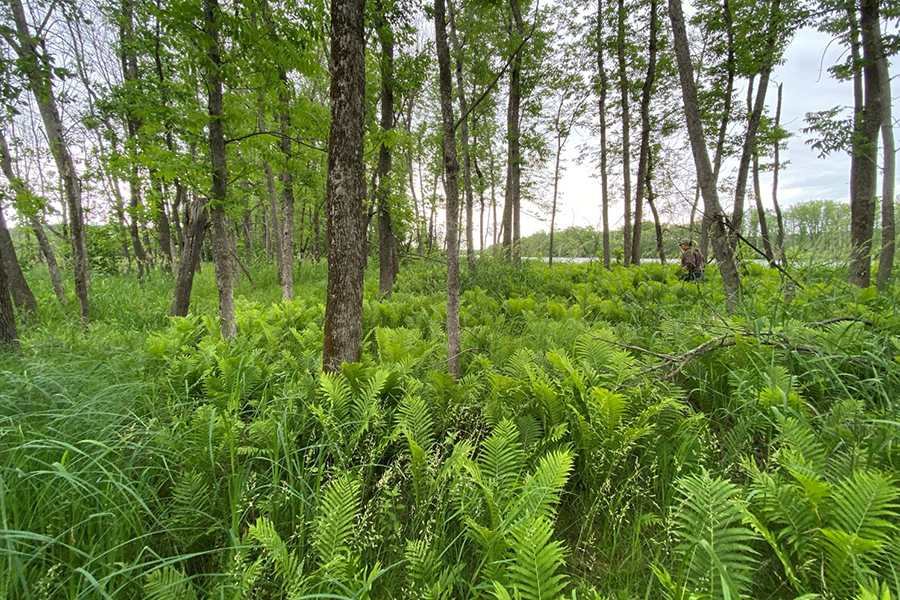TYPE
TOPIC
A crew of WisCorps members will plant the trees
A crew of six early career conservationists will plant 20,000 tree seedlings along shorelines and islands in the upper St. Louis River Estuary over two weeks beginning June 12. After crews removed invasive shrub species from the wetlands this past autumn, the effort kicks off three years of planting in a project led by the Lake Superior National Estuarine Research Reserve in partnership with the Wisconsin Department of Natural Resources. The effort protects forested wetlands and manoomin (wild rice) restoration sites while reducing shoreline erosion as the emerald ash borer (EAB), a non-native insect, causes black ash trees to die off.
Black ash trees are abundant along the St. Louis River Estuary. As the trees are impacted by EAB infestation, these seedling trees will take their place. The trees will maintain forests for birds and wildlife and protect islands and wetlands from erosion during floods. Tree species were selected based on their tolerance for wet or flooded soils, ability to withstand warming temperatures in the region, and the cultural uses or traditions that they support.
The project is within the St. Louis River Streambank Protection Area on Wisconsin DNR lands within the boundaries of the Lake Superior National Estuarine Research Reserve and the 1842 and 1854 Ceded Territories of the Fond du Lac Band of Lake Superior Ojibwe. The five project sites cover just under 100 acres near the Fond du Lac neighborhood of Duluth, Minnesota. Seventeen species of trees will be planted on unnamed islands at Walleye Alley and North Duck Hunter Bays, a peninsula around Landslide Bay and in wetlands at the mouth of the Red River near Boy Scout Landing in the Gary New Duluth neighborhood. In future years, the project will expand to include areas on Clough Island.
A crew of WisCorps members will plant the trees. WisCorps is a non-profit conservation corps based in La Crosse, Wisconsin that engages young adults in conservation projects across the state. The project is funded by the Great Lakes Restoration Initiative, which helps to identify, restore and protect important Great Lakes habitats.
The Lake Superior National Estuarine Research Reserve is one of 30 Reserves in the United States. The program is operated by the University of Wisconsin-Madison Division of Extension with leadership from the National Oceanic and Atmospheric Administration and based on the UW-Superior campus. The Reserve encompasses over 16,600 acres along the St. Louis River freshwater estuary and is based on Barkers Island in Superior.
